One Very Possible Picture Book Chat
Over Breakfast with Anne Schwartz and Lee Wade
 June 20th, 2011 by jules
June 20th, 2011 by jules
— From Robert Andrew Parker’s Piano Starts Here: The Young Art Tatum
(Schwartz & Wade Books, 2008)
This illustration happens to be my very favorite picture book illustration from all of 2008. (What? Such categories actually do exist in my head.) And I’m taking the liberty of pulling it from the 7-Imp archives to re-post here. My visitors this morning mention this picture book below, and so I take every chance I can get to share Robert Andrew Parker’s art.
Okay, wait. While I’m at it, let me re-post this, too, from a book also mentioned below:
You must click on that image to super-size it. No, really. You MUST. Because it’s a gorgeous spread is what it is. That comes from illustrator André Carrilho in Jonah Winter’s You Never Heard of Sandy Koufax?!, also published by Schwartz & Wade Books in 2009.
Back to my visitors: I’m doing something different and altogether new for me here at 7-Imp this morning, the sort of thing that is more up Steven Withrow’s alley, but there’s a first time for everything, yes? I’m having a brief chat today with Anne Schwartz and Lee Wade, who five years ago created the Schwartz & Wade imprint at Random House. Evidently, they’re celebrating this anniversary with a blog tour of sorts. I was asked if I wanted to be involved, and given the fact that I’ve followed their picture books with interest over the past five years, I thought it’d be neat to take the opportunity to ask them their thoughts on picture books today and what’s next for the imprint. If I didn’t have my own writing deadline right now, I would have asked them more than just four whoppin’ questions, but I’m glad we were able to do this at all.
The best part—bonus!—is that they share some picture book art below, and you all know what an illustration junkie I am. I know many of you 7-Imp readers out there are, too, so I’m happy to share.
As a brief bit of background here, Anne and Lee worked together at Simon & Schuster for just under ten years before working at Random House. During their careers, they have had a particular focus on picture books, so I’m happy to have them visiting today. Let’s get right to it…
Jules: What did the two of you think about the New York Times piece on the decline of picture books, published in October?
Schwartz and Wade: Well, it goes without saying that we love picture books, and the kids, teachers, and librarians we know love them, too. We staunchly believe that picture books play a crucial role in the development of a child and that kids should read books that are appropriate for their age. Who doesn’t know a kid who can read Bridge to Terabithia in first grade…but let’s all be honest, wouldn’t he/she appreciate it more in fourth grade?
In fact, we believe that older kids…and (are you sitting down?) even adults…can enjoy picture books, and shouldn’t be denied the incredible pleasure they offer. While we publish books that are obviously aimed at very young children, like Tad Hill’s Duck and Goose board books, A Ball for Daisy by Chris Raschka, or Everything I Need to Know Before I’m Five by Valorie Fisher, we also publish picture books that would be lost on young readers and loved by older ones. For example, this fall we’re publishing Never Forgotten by Patricia C. McKissack, illustrated by Leo and Diane Dillon. It’s a powerful, poetic story about those left behind when an African child is stolen away into slavery.
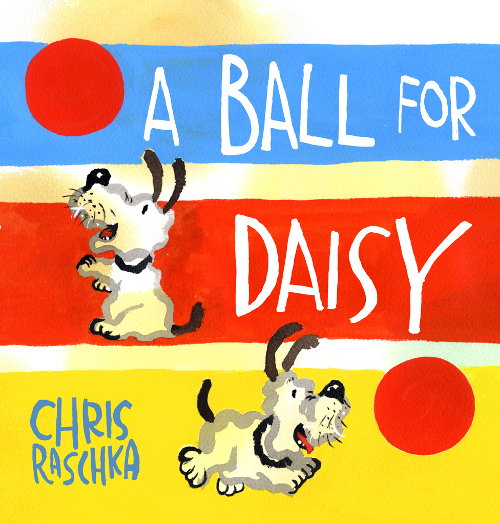
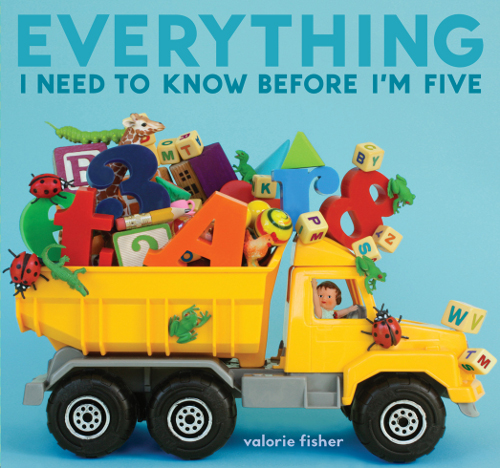
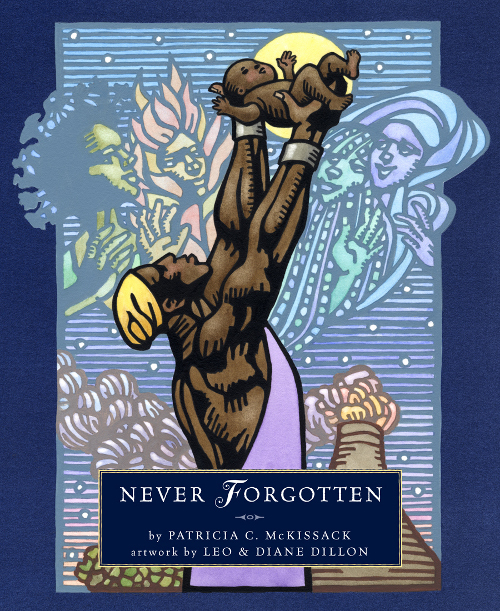
Another book that springs to mind is one of our strong-selling backlist titles, Child of the Civil Rights Movement by Paula Young Shelton, illustrated by Raul Colón. While Paula’s voice and Raul’s visual sophistication is specifically aimed at 5 to 9 year olds, it can certainly be loved and appreciated by “kids of all ages,” which is code in our business for adults!
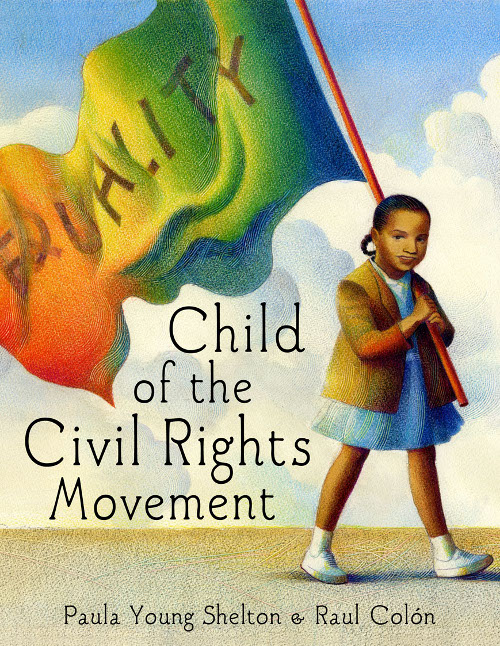
Unlike some of our competitors, Schwartz & Wade hasn’t cut back on the number of picture books we publish, nor have we noticed a decline in the sale of our picture books. We believe in our heart of hearts that a good book will (almost always) find an audience, and that it’s our responsibility as publishers to make sure high quality picture books are out there for children to enjoy.
Jules: What do you see as picture books trends of late — ones you both like and, quite possibly, dislike?
Schwartz and Wade: Let’s start off by saying that we are not big trend-followers or bandwagon-jumpers. Of course, we keep our eyes and ears open and pay attention to what’s being published and how it’s selling, but we prefer to listen to our authors and illustrators, as well as work on what interests us and what we love.
For example, we haven’t been living under a rock, so we know that pink and princesses are in. So when we got the manuscript for Princess Hyacinth from Florence Parry Heide and loved it, we were amused by the serendipity: how nice that we wanted to publish a book about something very popular! Well, okay, the manuscript was about a highly unusual, unpink princess, but still…. And choosing Lane Smith, an old friend of Florence’s, to illustrate the text may not have been playing into that princess trend either; in fact, Lane gave us a jacket for the book that was mostly gray! Would we have loved Princess Hyacinth as much if it was about a more traditional princess? Doubtful.
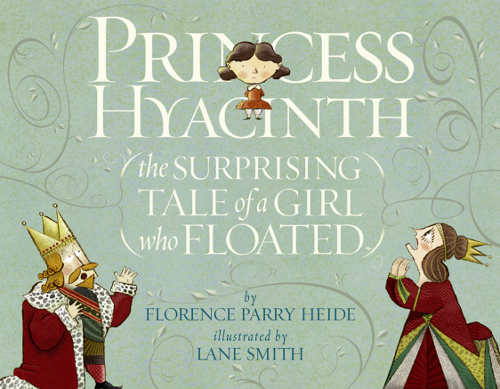
It is also clear to us that books about books sell. That is NOT why we published How Rocket Learned to Read by Tad Hills, however; we published it because we loved it, and because we’re pretty sure that there are no picture books out there about the actual process of learning how to read.
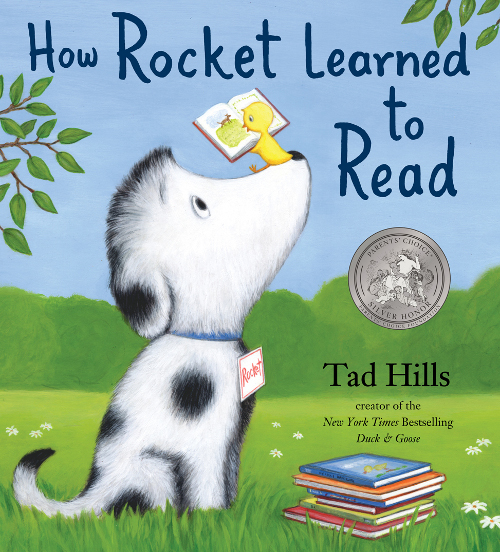
We’re about to publish The Lonely Book by Kate Bernheimer, illustrated by Chris Sheban. Yes, it’s about a book, but once again, that’s not why we’re publishing it. We’re publishing it because we fell in love with the story of a library book that grows old and is abandoned.
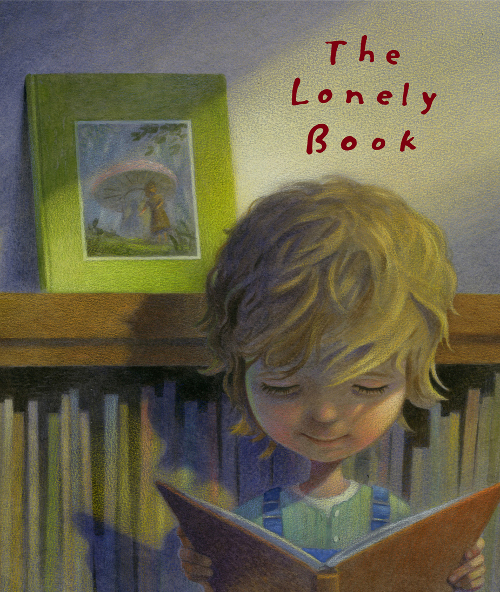
On the other hand, we also recognize what isn’t hot. For example, we are well aware that folktales are notoriously difficult to sell right now. Nevertheless, we chose to publish The Boy Who Loved Words by Roni Schotter, illustrated by Giselle Potter, an original folktale if ever there was one, and a manuscript that we completely adored. And we’re happy to report that it has sold, and continues to sell, really well; it has become a staple of our backlist.
We’re also about to publish, in Fall 2011, The Orphan, a Greek version of the Cinderella story by Anthony Manna and Christadoula Mitakidou, also illustrated by Giselle — which is both princessy and a folktale!
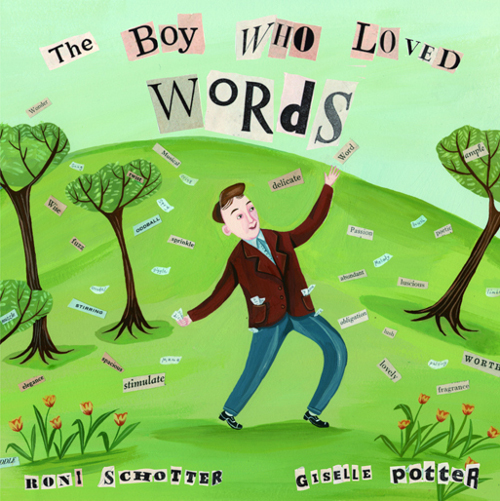
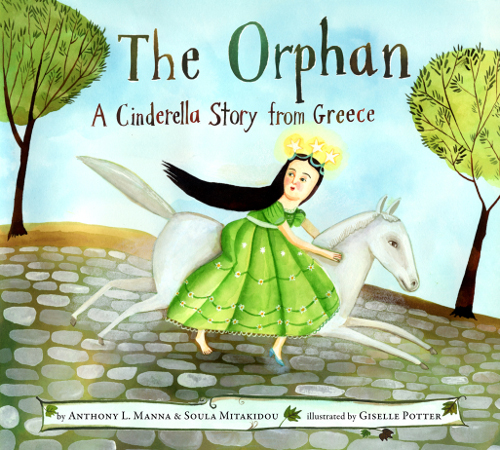
In the end, who wouldn’t rather be a trendsetter than a trend-follower? It’s way more satisfying, right? And though it’s riskier, all of us in publishing know that the up side is way greater, too. We aim to publish original books that we hope others will want to emulate. At André Carrilho’s suggestion, we gave You Never Heard of Sandy Koufax?! (written by Jonah Winter) a lenticular cover…something that had never been done before on an upmarket picture book. And while this didn’t start any trends, that book has sold very well, and we’re sure the cover is partially responsible.
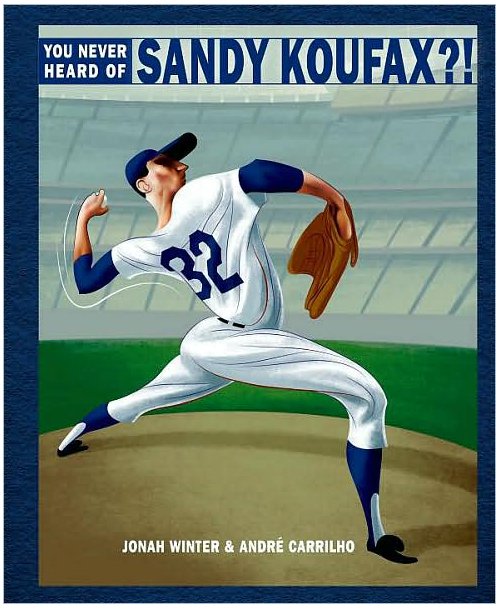
Likewise, when we published Here Comes the Garbarge Barge by Jonah Winter, illustrated by Red Nose Studio, the illustration process was so fascinating that we decided to showcase it on the inside of the book jacket—something we don’t think anyone has done before.
Of course, neither of these jacket ideas were earth-shattering or trend-setting. But they were in keeping with the spirit of the books themselves, and hopefully enrich the overall reading experience.
Jules: I’d like to ask you, simply: What do you love about the unique art form that is the picture book?
Schwartz and Wade: Everything!
We love that each picture book is a self-contained world. So much has to happen in just 32 pages. In a good picture book, each word is chosen carefully, every word is necessary. In {Elisha Cooper’s} Beaver is Lost, there are just four words and three of them are the title of the book.
In Anne Isaacs’ picture book Dust Devil, illustrated by Paul O. Zelinsky, the story may be long, but how rich, expressive, and lively it is!
up in that thicket of thorny thieves.”
(Click to enlarge spread.)
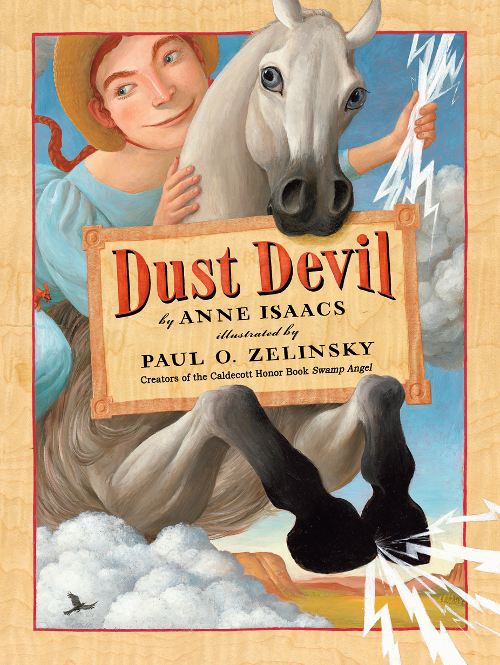
And when an illustrator takes a strong text and extends it, the book really starts to sing. It’s like magic when text and art come together to create something greater than either one of its parts. We hope it happens in all of our books, so choosing a few examples is a bit like choosing one child over another. Still, here goes…
When Jenny Offill was writing 17 Things I’m Not Allowed to Do Anymore, of course she was envisioning something funny when she wrote, “I had an idea to give my brother the gift of cauliflower.” But what, exactly? Here’s what Nancy Carpenter saw:
And when Jonah Winter mentioned that the barge in Here Comes the Garbage Barge “was not welcome” in Florida, he probably wasn’t thinking that Red Nose Studio would come up with this image:
And we are quite sure that when April Stevens created the misbehaving Finnemore family in Edwin Speaks Up, she wasn’t thinking it would be this family of ferrets that Sophie Blackall concocted:
And when Alan Madison wrote Velma Gratch and the Way Cool Butterfly about a young scientist who loves butterflies, it’s pretty unlikely that he imagined Velma Gratch having these incredible pony tails that actually look like butterfly wings {as illustrated by Kevin Hawkes}:
It’s that marriage of words and pictures—the creative mind meld of a writer and an illustrator—that makes a picture book special, and these kinds of wonderful surprises happen when the two play off of each other.
Then, of course, there’s the unique art form that is a picture book written and illustrated by the same person. The way text and art can play off each other when a single creator imagines both word and image at once is fascinating to us. Just look at that first page of Duck & Goose where our two protagonists are looking at what they decide is an “egg.”
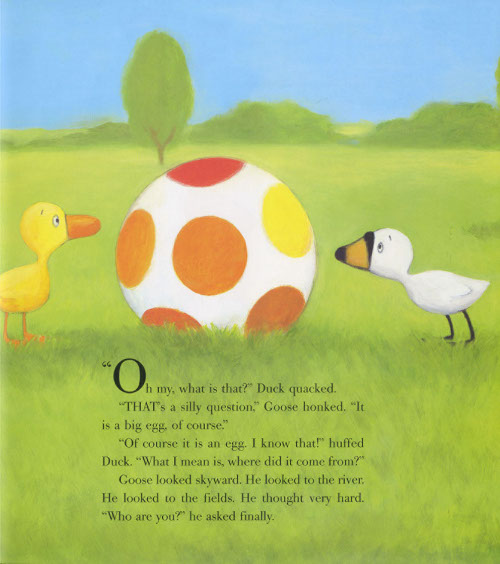
We know that it is nothing of the sort—it is a ball. The reader is in on the joke—how satisfying is that?! And how difficult … or even impossible … for anyone other than a single author/illustrator to create?
What also amazes us every day is how much variety is possible within the limitations of a 32-page book. It never gets boring. Picture books can be poignant or funny, elegant or quirky; some are historical and others modern; some have no words and some have lots of words; some tackle a fresh subject and others approach an old subject in a new way; some are non-fiction and some are fantastical; some characters are people, while some are animals—and we even published one that starred a cloud.

And all this within the very prescribed, strict limitations that are a picture book.
In the end, we love picture books that make us feel something. We love working with writers who can conjure up whole worlds and then squeeze them down into a simple, yet phenomenally rich story, and we love illustrators who take us places we didn’t know existed.
Jules: What do you envision for your imprint in the future?
Schwartz and Wade: Retirement. Kidding, just kidding!
Actually, we love the challenge of trying new things, of keeping the books fresh and interesting. The world of children’s books is constantly in flux, which is what excites us about it. Illustration styles change, writing styles change, readers grow up and are replaced by new readers that are part of a new, different culture.
Some new books you’ll see on upcoming Schwartz & Wade lists are our first YA novel — The Girl in the Park by Mariah Fredericks, a mystery set in a NYC private school; a teen graphic novel about a girl who pretends she has a peanut allergy in order to get attention — Peanut by Ayun Halliday and illustrated by Paul Hoppe; and Bon Appetit! The Delicious World of Julia Child by Jessie Hartland, a graphic picture book about You-Know-Who. Let’s just say that there was a sizeable learning curve for us in publishing all these books, but that is truly what has made them such a pleasure.

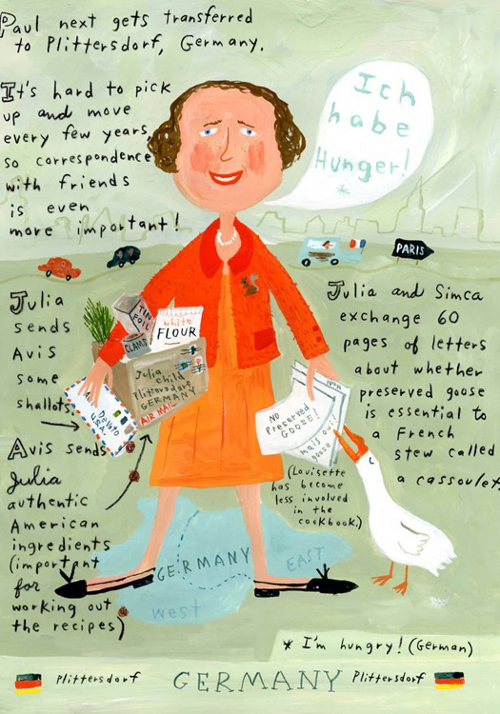
Anne had never worked on board books before coming to Random House, but can now say that she is the publisher of several, like Duck & Goose, It’s Time for Christmas and Duck and Goose, Here Comes the Easter Bunny.
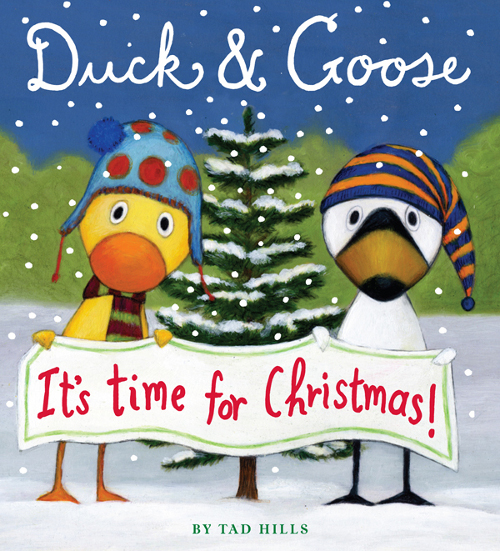
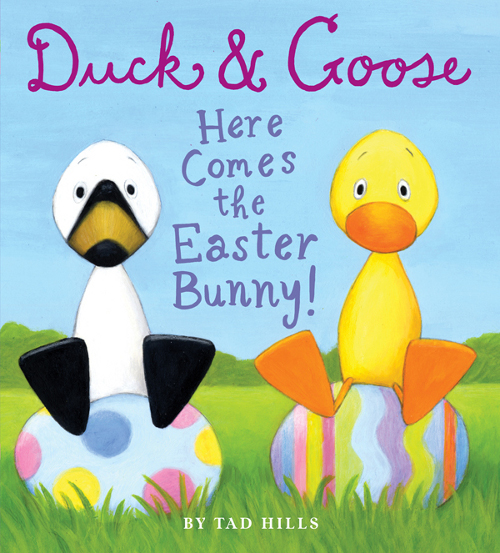
Lee had never edited a book, and now she has edited several, like Piano Starts Here by Robert Andrew Parker and A Ball for Daisy by Chris Raschka.

(Click to enlarge)
Both of us intend to keep working with new authors and illustrators, experimenting with new formats, and trying new things… (However, Anne wants everyone to know that, due to an inability to remember anything involving numbers, she has given up trying to learn how to design books.)
Thanks again to Anne and Lee for visiting. The official Schwartz & Wade site is here, and I believe their next blog tour stop will be here.
Quick copyright note:
All images here are used with permission of Schwartz & Wade Books. The two opening illustrations, as well as the Dust Devil illustration, were previously posted at 7-Imp with the requisite copyright info. In other words, be cool, dear readers, and please don’t take these images without permission. Thanks.
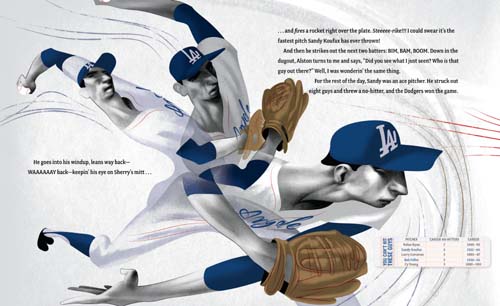


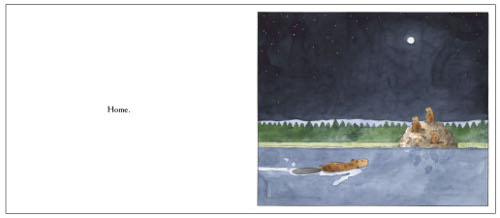
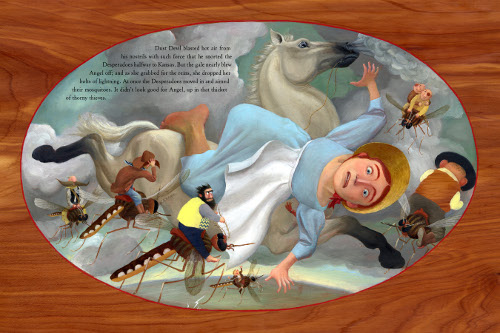
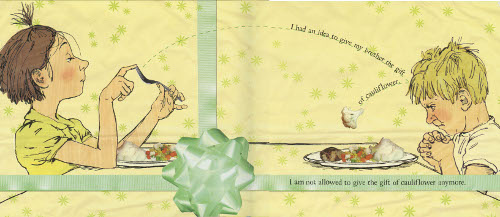

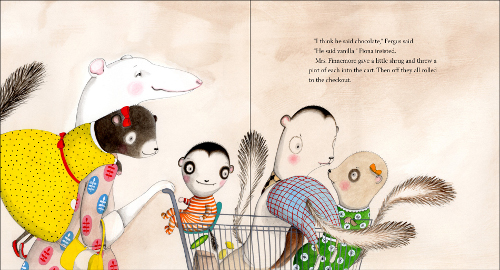
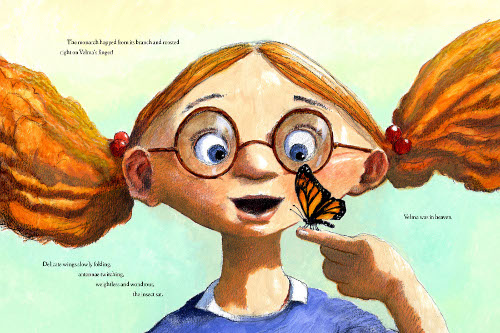
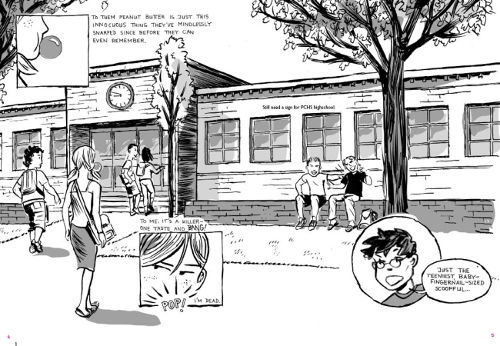
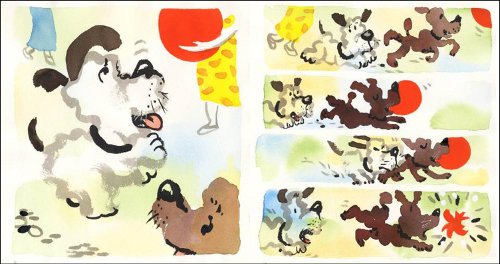

OH! The Julia Child book is ADORABLE – and the illustrations for The Garbage Barge — hysterical. What fun!! My all-time, needs-to-be-framed fave, though, is the girl with the butterfly. That’s, like, the face of my inner child, going, “Ooooh!” about everything.
These are so, so much fun. Yay for Schwartz & Wade!
Schwartz & Wade is a real bright spot in US children’s book publishing. Thanks for the interview!
What a beautiful list and a great post!
AWESOME post, Jules! Great choice of opening image. Man, I love the books Schwartz and Wade are putting out.
Thanks, all. Different kind of 7-Imp post, but all focused on illustration and picture books, which makes me happy.
I’m so. in. love. with that painting, Matt. And have been since 2008. I want it on my wall! (Somehow? One day? I should see if he sells prints.)
What a truly wonderful mixed-bag of books! Thanks for the great post, Jules.
I love this list. And I’m so eager for Peanut!
schwartz+wade constantly surprises and inspires!
thank you for this great interview.
A great interview once again and so cool to hear the perspectives from the publishers. Danke!
Two of my favorite words in publishing: “takes chances.” Kudos to Schwartz and Wade!
[…] imprint, celebrate the imprint’s fifth anniversary and share why they love picture books (June 20, 2011): “We love that each picture book is a self-contained world. So much has to happen in just 32 […]
[…] 2011: http://blaine.org/sevenimpossiblethings/?p=2156 […]
[…] by Schwartz & Wade. To see art from that book, you can visit that 2010 7-Imp post (or even this one), but with the exception of some portfolio pieces at the close of this interview, all the images […]